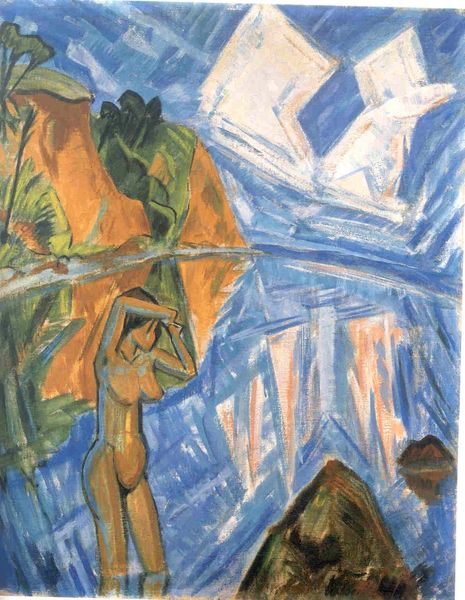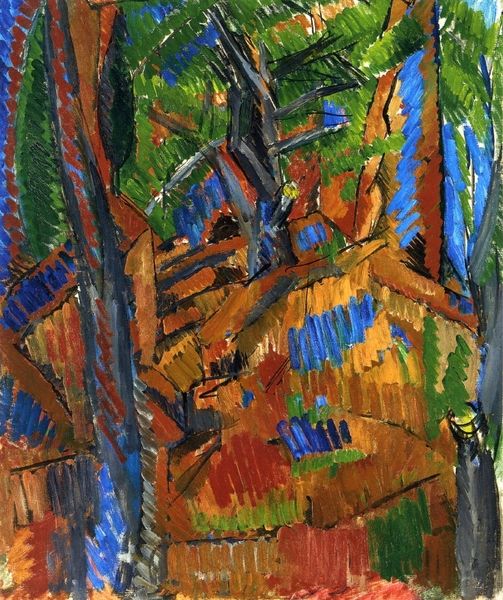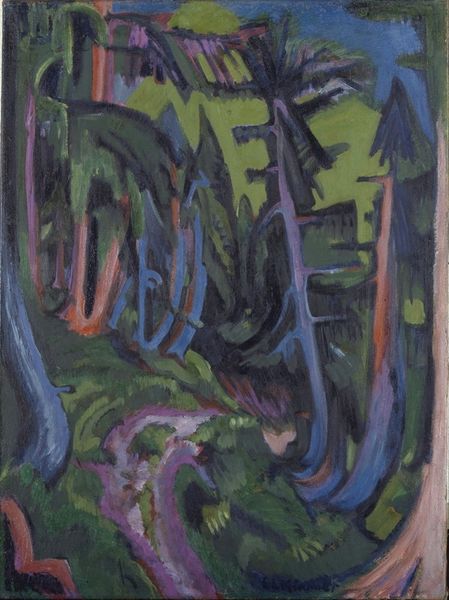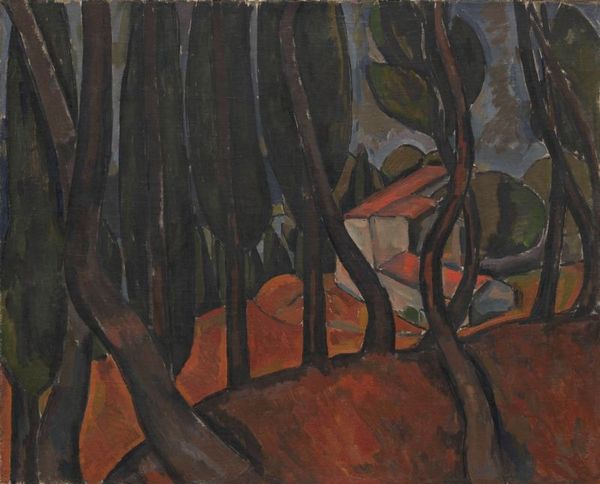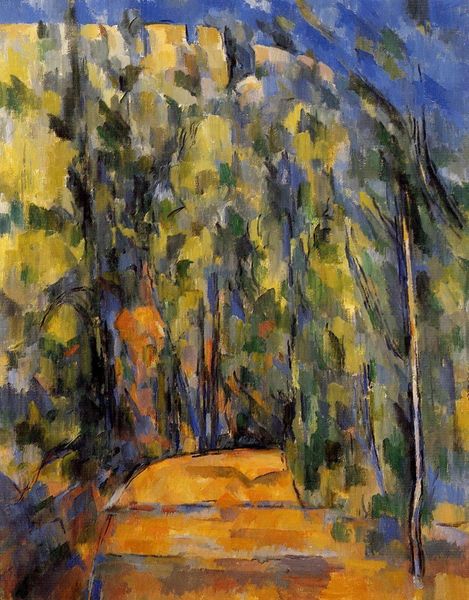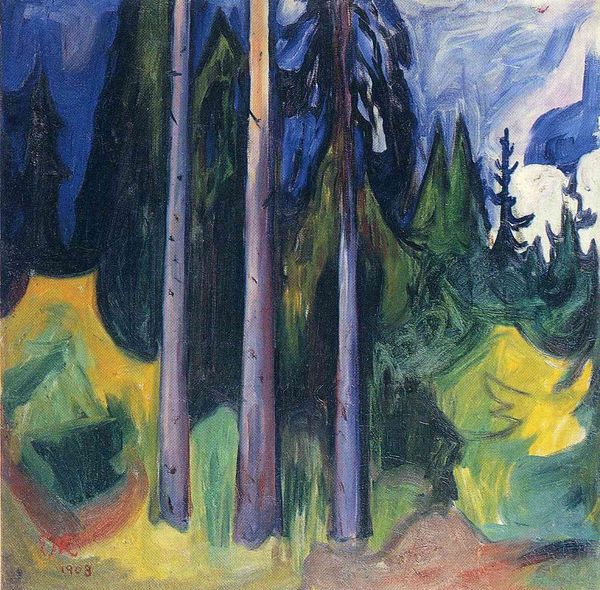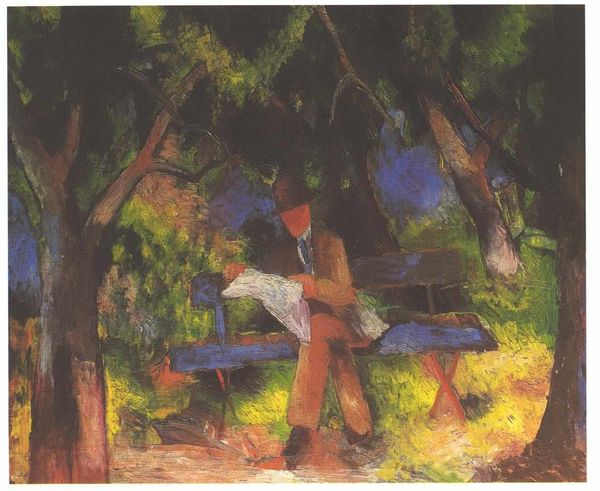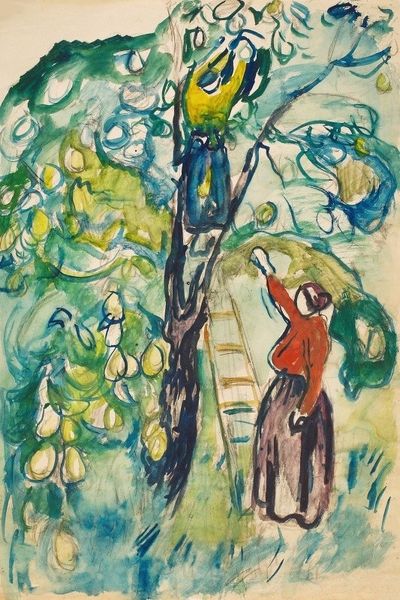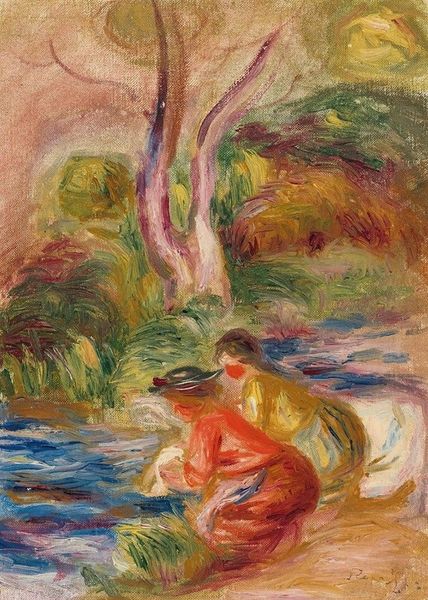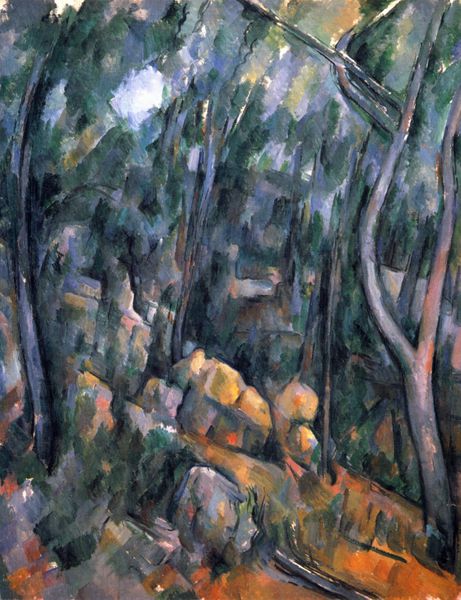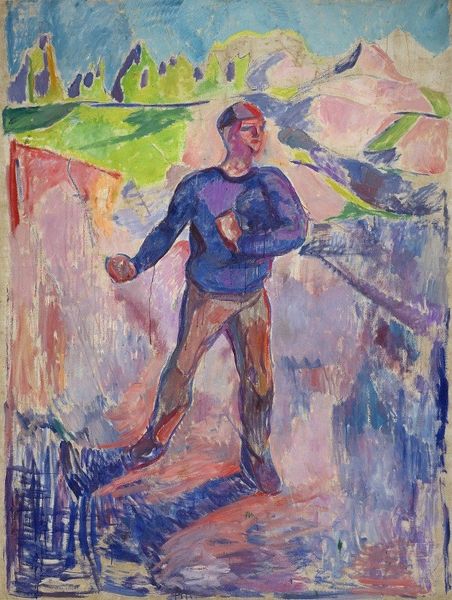
painting, oil-paint
#
painting
#
oil-paint
#
landscape
#
figuration
#
oil painting
#
expressionism
#
modernism
#
expressionist
Dimensions: 130 x 105.5 cm
Copyright: Public domain
Editor: We’re looking at Edvard Munch’s "The Lumberjack," painted in 1913. The scene is vividly depicted with oil on canvas, capturing a lone figure in the midst of his labor. There's something about the raw textures that draws me in. What do you see in this piece, especially considering the historical context? Curator: What strikes me is the immediate representation of labour through visible brushstrokes. Consider the materials – the coarse canvas, the thick application of oil paint, it all points to the physical act of creation mirroring the lumberjack’s physical labor. It challenges traditional art’s tendency to obscure the making, to hide the artist's toil. How does this emphasis on the 'made' aspect affect your understanding? Editor: It makes me think about the romanticized view of labour versus its harsh reality. Was Munch commenting on the changing social landscape through this depiction? Curator: Precisely! Munch isn't just painting a scene; he's presenting labor. The lumberjack is framed as part of a production chain. Look at the cut tree— evidence of work, a commodity in progress. Does that raise questions about consumption? Is the felling of trees in itself an act that is put up for interpretation, by you, now? Editor: It does. It makes you wonder about the social value attached to this lumberjack’s work, but also the value of the lumber, of nature's raw material. The painting itself becomes a commodity as well. Curator: Exactly. By focusing on the labor and the materials, the painting ceases to be simply an image and starts to embody a whole system of production, value, and consumption. The rough handling of the paint emphasizes that production, echoing the manual labor depicted. Editor: So, by laying bare the artistic process and portraying physical work, Munch critiques the consumption-oriented culture of his time. Curator: Precisely. And, perhaps, of our own.
Comments
No comments
Be the first to comment and join the conversation on the ultimate creative platform.
